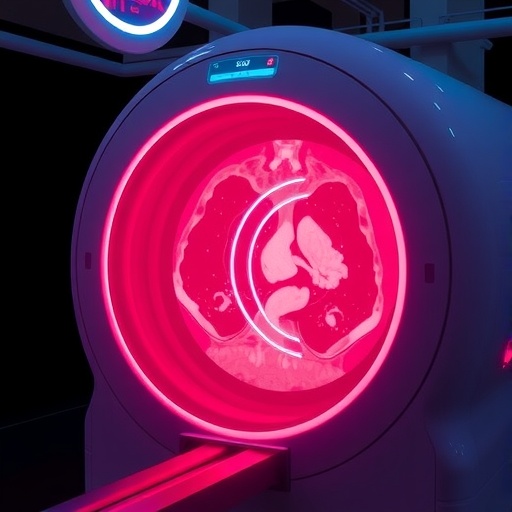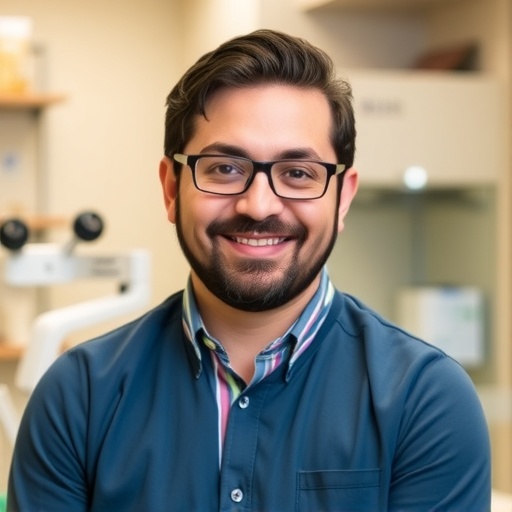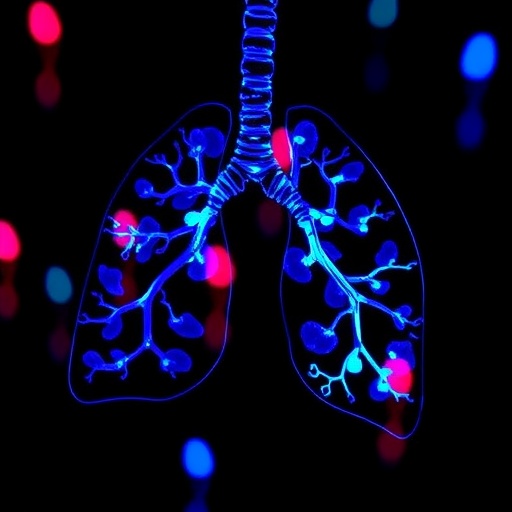The Huntsman Cancer Institute at the University of Utah has introduced a groundbreaking advancement in cancer care with the inauguration of its first dedicated angiography-CT suite. This specialized facility combines two sophisticated imaging technologies—angiography and computed tomography (CT)—into a unified space to revolutionize interventional radiology treatments. Situated as the only suite of its kind in the Mountain West region, this technological milestone aims to improve therapeutic precision and patient convenience, ultimately transforming the management of complex oncologic conditions.
Interventional radiology is a field grounded in the use of advanced imaging techniques to guide minimally invasive procedures. By integrating angiography and CT in one location, clinicians at the Huntsman Cancer Institute can now perform comprehensive diagnostic and therapeutic interventions with unprecedented efficiency and accuracy. The dual imaging capabilities facilitate a seamless workflow where patients no longer need to be transferred between different rooms or make repeated visits for separate imaging sessions, significantly mitigating the logistical challenges and health risks associated with traditional workflows.
Angiography, a pivotal component of this suite, employs live X-ray fluoroscopy combined with a contrast agent injected into the blood vessels. This technique allows physicians to visualize the precise vascular feeding patterns of tumors. Recognizing the intricate vascular supply to malignant tissues is critical for therapies aimed at starving tumors by occluding their blood flow or delivering targeted chemotherapy or radiation directly via the bloodstream. This goal-driven approach maximizes the therapeutic effect on the tumor while sparing the surrounding healthy tissues, thereby minimizing the systemic side effects commonly seen in traditional systemic treatments like hair loss, nausea, and generalized toxicity.
Parallel to angiography, CT imaging offers high-resolution, still images that provide detailed anatomical information. Within the angio-CT suite, CT scans are instrumental in delineating the tumor’s exact location and its spatial relationship to adjacent organs. This precision facilitates interventions such as biopsy needle guidance and ablation therapies. Interventional radiologists employ CT to direct thermal ablation tools that either freeze (cryoablation) or heat (radiofrequency or microwave ablation) malignant cells, thereby destroying the tumor tissue with minimal collateral damage. This combined approach enhances clinical outcomes, particularly for tumors in anatomically challenging regions like the liver and kidneys.
Historically, performing angiography and CT-guided interventions required separate sessions or at least relocating patients between different suites, often under anesthesia, which increased patient discomfort, procedural risk, and health system costs. By housing both modalities in a single suite, the Huntsman Cancer Institute minimizes exposure to multiple anesthetic events and reduces time delays between imaging and treatment. This streamlined process allows clinicians to first use CT imaging to plan the intervention, proceed with the angiographic procedure under real-time X-ray guidance, and then immediately verify treatment efficacy via CT—all within the same setting.
Dr. Wael Saad, director of interventional radiology, emphasizes how the integrated suite enables dynamic imaging workflows. For example, clinicians can confirm the success of tumor embolization by analyzing post-procedure CT images before concluding the session. This capability ensures immediate adjustments if necessary, enhancing treatment precision and reducing the need for subsequent interventions. Such technological integration is set to revolutionize the treatment paradigm, especially for patients living in rural or underserved areas who would otherwise face burdensome travel and delayed follow-up.
The anatomical accuracy and real-time feedback provided by the angio-CT suite also improve multidisciplinary care coordination. Complex cancer cases often require the expertise of multiple specialists, including oncologists, radiologists, and surgeons. The hybrid imaging suite fosters collaborative treatment planning by furnishing comprehensive imaging data that inform decisions about the most appropriate minimally invasive therapies. Consequently, it accelerates therapeutic delivery and aligns with patient-centered care principles.
From a patient perspective, the reduction in procedural frequency, cumulative anesthesia exposure, and travel demands translate into improved safety, convenience, and overall experience. Patients who may have previously required separate visits spaced days or weeks apart can now complete critical imaging and treatment in a single appointment. This efficiency mitigates the emotional and physical toll associated with cancer treatment and provides timely feedback regarding therapeutic response, crucial elements in managing aggressive malignancies.
This angio-CT innovation particularly benefits liver and renal cancers, where targeted embolization and thermal ablation have emerged as vital therapeutic modalities. However, the suite’s capabilities extend across multiple cancer types, underscoring its versatility within interventional oncology. By enabling precise mapping and treatment of tumors in situ, the technology supports enhanced tumor control while preserving organ function and patient quality of life.
The implementation of the angio-CT suite embodies Huntsman Cancer Institute’s commitment to integrating cutting-edge technology with compassionate, patient-centered care. Dr. Charles Ray, interim chair of the Department of Radiology, characterizes this advancement as a “game changer” that elevates the standard of care through highly targeted therapies delivered with exceptional precision. This aligns with the institute’s strategic goal to pioneer minimally invasive approaches that improve clinical outcomes while reducing treatment-associated morbidity.
Officially launched on November 11, the angio-CT suite marks a significant investment in oncologic innovation for the Mountain West region. The novel application of dual imaging modalities in a single clinical space underscores the evolving role of interventional radiology in cancer treatment and symbolizes a promising future where technology and human expertise converge to redefine patient care standards.
Huntsman Cancer Institute, designated as a National Cancer Institute Comprehensive Cancer Center, serves patients across Utah, Idaho, Montana, Nevada, and Wyoming. The institute’s extensive research and clinical trials infrastructure supports ongoing innovation in cancer treatment, including the development of technologies like the angio-CT suite. By continuously expanding its capabilities, Huntsman advances a mission centered on transforming cancer diagnosis, treatment, and survivorship through scientific discovery and precision medicine.
In summary, the angio-CT suite at the University of Utah’s Huntsman Cancer Institute represents a pivotal advancement in the field of interventional oncology. By harnessing the synergistic power of angiography and CT imaging, the suite not only optimizes therapeutic efficacy but also significantly enhances the patient experience. This innovative model stands as a beacon for other institutions seeking to redefine cancer care through technology-driven, patient-focused solutions.
Subject of Research: Cancer treatment, interventional radiology, angiography, CT imaging
Article Title: Huntsman Cancer Institute Unveils Region’s First Integrated Angiography-CT Suite to Revolutionize Cancer Care
News Publication Date: November 11, 2023
Web References:
https://healthcare.utah.edu/huntsmancancerinstitute/
https://healthcare.utah.edu/radiology/interventional
Image Credits: Huntsman Cancer Institute
Keywords: Cancer treatments, Liver cancer, Interventional radiology, Angiography, CT imaging, Minimally invasive therapy, Tumor embolization, Thermal ablation
Tags: advanced cancer imaging techniquesdual imaging capabilities in oncologyefficient diagnostic procedures in radiology.Huntsman Cancer Institute advancementsimproved patient care in oncologyintegrated imaging for complex oncologic conditionsinterventional radiology innovationsminimally invasive cancer treatmentsMountain West region medical advancementsRevolutionary angio-CT technologyspecialized angiography-CT suitetherapeutic precision in cancer management





